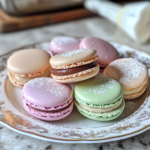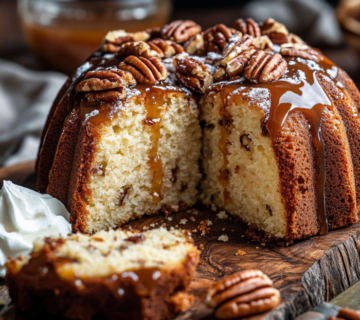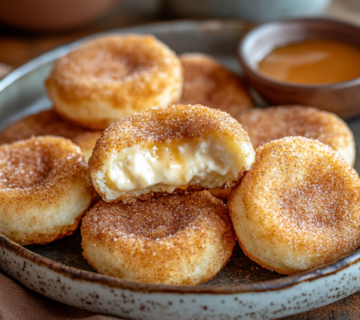French macarons are delicate, meringue-based sandwich cookies that have gained worldwide acclaim for their crisp exteriors, chewy interiors, and vibrant colors. Originating from France, these confections consist of two almond flour-based shells filled with a variety of fillings such as buttercream, ganache, or jam. While they are often associated with patisserie windows and high-end bakeries, making macarons at home is an achievable and rewarding endeavor.

Why You’ll Love This Recipe
Embarking on the journey of crafting French macarons at home offers numerous benefits:
- Mastering a Classic Pastry: Homemade macarons allow you to delve into traditional French baking techniques, enhancing your culinary skills.
- Customization: From colors to flavors, you have complete control to tailor macarons to your preferences or special occasions.
- Dietary Considerations: Naturally gluten-free, macarons are suitable for those with gluten sensitivities.
- Impressive Presentation: Their elegant appearance makes them a standout treat for gatherings, gifts, or personal indulgence.
Ingredients
To create approximately 20 filled macarons (40 shells), you will need:
- Egg whites
- Cream of tartar
- Superfine sugar (caster sugar)
- Almond flour
- Confectioners’ sugar (powdered sugar)
- Gel food coloring (optional)
- Desired filling (e.g., buttercream, ganache, jam)
Directions
1. Preparation
- Age the Egg Whites: Separate the egg whites from the yolks and place the whites in a clean, grease-free bowl. Cover and refrigerate for 24 hours. Aging the egg whites relaxes their proteins, aiding in achieving a stable meringue. Before use, allow them to return to room temperature.
- Prepare Baking Sheets: Line baking sheets with parchment paper or silicone baking mats. If precision is desired, draw 1.5-inch circles on the underside of the parchment as a piping guide.
2. Making the Meringue
- Clean Equipment: Wipe down mixing bowls and beaters with a small amount of vinegar or lemon juice to eliminate any grease, which can hinder meringue formation.
- Whip Egg Whites: In the cleaned bowl, add the aged egg whites and cream of tartar. Using a handheld or stand mixer fitted with a whisk attachment, beat on medium speed until soft peaks form.
- Incorporate Sugar: Gradually add superfine sugar in three additions, beating well after each. Continue to beat on medium-high speed until stiff, glossy peaks are achieved. If using, add a few drops of gel food coloring during this stage and mix until evenly distributed.
3. Preparing the Dry Ingredients
- Sift Dry Ingredients: In a separate bowl, combine almond flour and confectioners’ sugar. Sift this mixture twice to ensure a fine texture, discarding any large particles.
4. Combining Ingredients (Macaronage)
- Fold Dry into Meringue: Gently fold the sifted dry ingredients into the meringue in three additions. Use a spatula to fold, pressing out some air while ensuring the mixture is homogeneous.
- Achieve Proper Consistency: The batter should flow like lava, forming a ribbon that reincorporates into the batter within about 10 seconds. This is crucial for smooth tops and the development of the characteristic “feet” during baking.
5. Piping the Macarons
- Fill Piping Bag: Transfer the batter into a piping bag fitted with a round tip.
- Pipe Shells: Holding the bag perpendicular to the prepared baking sheet, pipe small circles onto the parchment or mat, using the guides if applicable.
- Release Air Bubbles: Tap the baking sheets firmly on the counter several times to release trapped air bubbles. Use a toothpick to pop any visible bubbles on the surface.
6. Resting
- Develop a Skin: Allow the piped macarons to rest at room temperature for 30-60 minutes, or until the tops are no longer tacky to the touch. This step helps prevent cracking and promotes the formation of feet.
7. Baking
- Preheat Oven: While macarons are resting, preheat the oven to 325°F (163°C).
- Bake Shells: Place one baking sheet at a time on the middle rack and bake for 13 minutes. To test for doneness, gently touch the top of a macaron; it should feel firm and not wobbly. Avoid overbaking to prevent browning.
- Cool Completely: Remove from the oven and allow the shells to cool on the baking sheet for 15 minutes before transferring to a wire rack. Attempting to remove them too early may cause sticking.
8. Filling and Maturing
- Prepare Filling: While shells are cooling, prepare your desired filling (e.g., buttercream, ganache, or jam).
- Assemble Macarons: Pair shells of similar sizes. Pipe or spread a small amount of filling onto the flat side of one shell and sandwich with its pair.
- Mature the Macarons: For optimal texture and flavor, place the assembled macarons in an airtight container and refrigerate for 12-24 hours. This maturation process allows the filling to soften the interior of the shells slightly. Bring to room temperature before serving.
Variations
- Flavoring the Shells: Incorporate finely ground freeze-dried fruits, cocoa powder, or flavored extracts into the dry ingredients to infuse different flavors into the shells.
- Color Customization: Use gel-based food colorings to achieve a wide spectrum of colors without altering the batter’s consistency.
- Alternative Fillings: Experiment with various fillings such as fruit cur

Beginner’s Guide to French Macarons
- Total Time: 2 hours
- Yield: 20 filled macarons (40 shells) 1x
Description
“Learn how to make perfect French macarons with this beginner-friendly guide! Step-by-step instructions, expert tips, and flavor variations for these delicate, gluten-free treats.”
Ingredients
- 2 large egg whites, aged
- 1/4 teaspoon cream of tartar
- 50g (1/4 cup) superfine sugar (caster sugar)
- 100g (1 cup) almond flour
- 100g (2/3 cup) confectioners’ sugar (powdered sugar)
- Gel food coloring (optional)
- Desired filling (e.g., buttercream, ganache, jam)
Instructions
1. Preparation
- Age the Egg Whites: Separate the egg whites and store in the fridge for 24 hours. Bring to room temperature before use.
- Prepare Baking Sheets: Line with parchment paper or silicone mats. Draw 1.5-inch circles as a piping guide if needed.
2. Making the Meringue
- Clean Equipment: Wipe bowls and beaters with vinegar or lemon juice to remove grease.
- Whip Egg Whites: Beat egg whites and cream of tartar until soft peaks form.
- Add Sugar: Gradually add superfine sugar, beating until stiff, glossy peaks form. Add food coloring if using.
3. Preparing the Dry Ingredients
- Sift Together: Sift almond flour and confectioners’ sugar twice for a fine texture.
4. Macaronage (Combining Ingredients)
- Fold Dry into Meringue: Gently fold in sifted dry ingredients in three additions.
- Check Consistency: The batter should flow like lava, forming a ribbon that disappears in 10 seconds.
5. Piping the Macarons
- Fill Piping Bag: Use a round tip for precise piping.
- Pipe Shells: Pipe small circles onto prepared baking sheets.
- Release Air Bubbles: Tap trays on the counter and use a toothpick to pop any bubbles.
6. Resting
- Develop a Skin: Let macarons rest at room temperature for 30-60 minutes, until tops are no longer tacky.
7. Baking
- Preheat Oven: 325°F (163°C).
- Bake: One tray at a time for 13 minutes.
- Cool Completely: Let shells cool on the baking sheet for 15 minutes before transferring.
8. Filling and Maturing
- Prepare Filling: Make buttercream, ganache, or jam.
- Assemble: Pair shells and pipe filling onto one side, then sandwich.
- Mature: Refrigerate macarons in an airtight container for 12-24 hours. Bring to room temperature before serving.
Notes
- Flavoring the Shells: Add freeze-dried fruit powder, cocoa, or extracts.
- Custom Colors: Use gel-based food coloring.
- Alternative Fillings: Try fruit curds, flavored ganache, or nut butter.
- Prep Time: 45 minutes
- resting time: 30-60 minutes
- Cook Time: 13 minutes
- Category: dessert
- Method: Baking
- Cuisine: French
Keywords: French macarons, macaron recipe, how to make macarons, beginner macarons, homemade French macarons





No comment